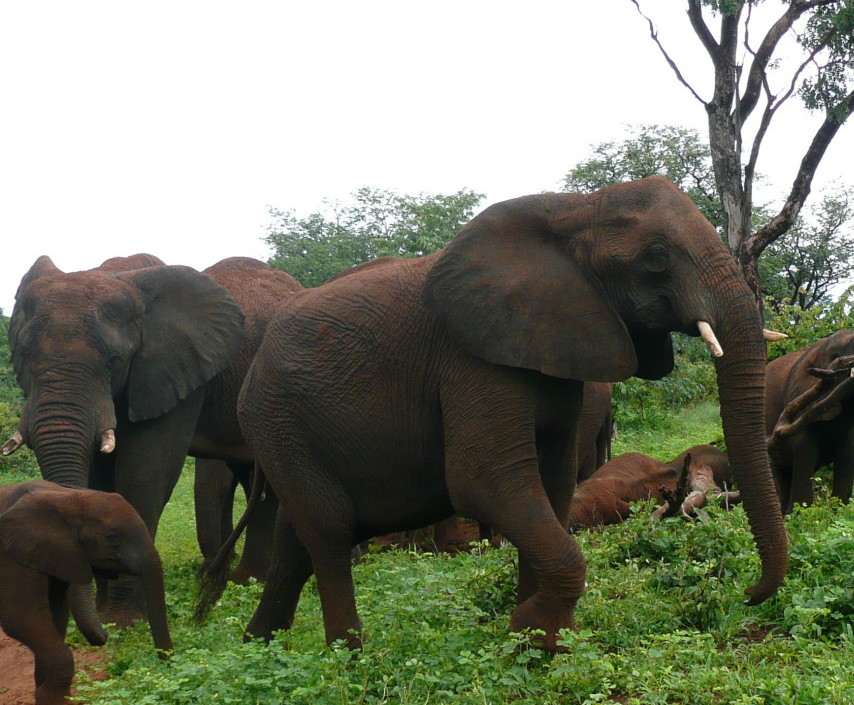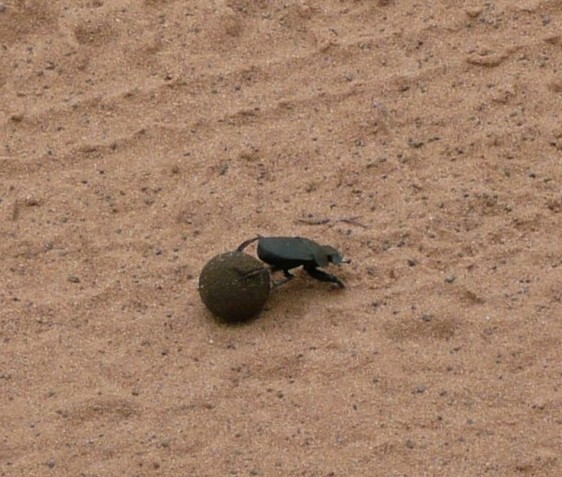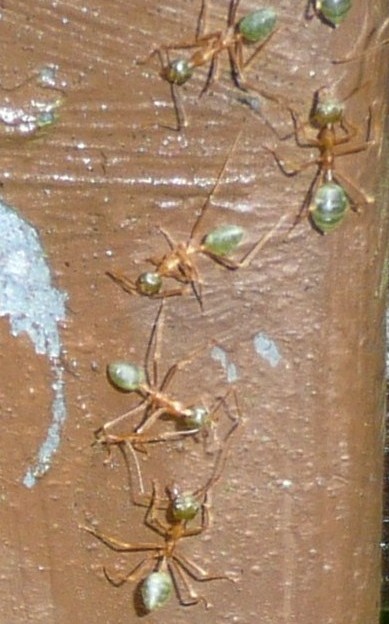
by Loti | May 26, 2014 | Conquering Fear, Insects, Landscapes, Uncategorized, United States
North Carolina. My first hike in years. About 3 miles, considered easy to moderate. I was warned about poison ivy, getting dehydrated and even to be careful of my hiking partner since I had recently met him. Not to mention bears, muggers, mountain lions, snakes and whatever else my catastrophic mind could conjure up. Yikes, should I even go? It is amazing what fear can prevent me from doing (I tend to become immobilized). But it is even more amazing what occurs when I conquer my fears. I had an absolute blast hiking. I felt like I was 8 years and on top of the world. And what a magical world. I half expected a forest fairy to run out and dance around us. We found a huge green lunar moth, tiny wildflowers, moss covered tree trunks, cardinals, streams flowing under old wooden bridges, mushrooms, and millions of plants including jack in the pulpits which I haven’t seen since childhood. And we found this beautiful (remember beauty is in the eye of the beholder)centipede tucked into a rotting log. How very cool. It was so much fun discovering new things around every bend. It just reinforces that life is to be lived, every day. There is magic every where you look. And if I hadn’t faced my fears about the hike? I would have missed one of the best experiences in recent...

by Loti | Jan 20, 2014 | Animals, Australia, Birds, Endangered Species, Environment, Flowers, Food, Health, Insects, Plants
Adelaide, Australia. Within walking distance of our hotel, I discover a magical botanical garden. Free to the public, in the middle of downtown, this 125 acre oasis includes a rainforest under glass. The forest is housed in the largest single span greenhouse in the Southern Hemisphere (for those of us geography challenged, the Southern Hemisphere is all the land below the equator including Anartica, Australia, most of South America and a third of Africa.) Entering the glass 2 story structure, the air is misty and buzzing with activity, from birds, insects, plants growing and 1,000 misting nozzles. I have always heard how important the rainforest (defined as a dense forest receiving 90-180 inches of annual rainfall) is to our global ecosystem, but I had no idea 50% of the world’s plants and animals live in them. And many of our medicines (some anti cancer and leukemia drugs for starters) come from rainforest plants. Yet we are losing 1-2 (and some biologists estimate the number is closer to 100) animal and plant species a day to extinction primarily from deforestation. Wow! So what can we do? I plan on learning more about the issues and possible solutions by joining a conservation club, visiting rain forests whenever I can and taking steps to recycle and be nice to our Earth. Once a species is gone, we can never get it back. And that sounds so...

by Loti | Sep 26, 2013 | Flowers, Food, Insects, Landscapes, United States
Denver. Strolling through the Botanical gardens, this interesting wood cabinet caught my eye. On further investigation, it turns out to be a hotel. For bugs! Why in the world would you want to have a place for insects to camp out? Well, where else do they stay in downtown Denver (or anywhere else in the world), especially in the winter? Made from pine cones, bamboo, grass, bricks and other recycled materials, is is an interesting and it turns out, an important addition to the landscape. Attracting ladybugs, solitary bees and wasps, grasshoppers and other critters that pollinate our flowers and vegetables and eat bad bugs like aphids, they are good for the both the garden and the ecosystem. Some are even considered art. And they are very popular in Europe. London sponsored a contest for architects to construct the most luxurious bug hotels which you can now see as you stroll though the city and the Chelsea Flower Show featured numerous insect hotels. Cities like Vancouver are also getting into the act. The downtown area reclaimed an old phone booth and turned into into an urban hotel for insects. How clever. If you don’t want to build a hotel, you can (of course) buy one on Amazon. And even if you are not into gardening, over 90% of the world’s flowers and crops need pollination to reproduce (just think, there would be no chocolate without midge flies!) By providing lodging, we can care for our insect brethren as we continue to encroach on and often destroy their habitats. Just be sure to leave the lights on and a mint...

by Loti | Jul 29, 2013 | Africa, Animals, Insects, Keystone Species
Africa. So what do a full moon and honey bees have in common? Elephants, of course. Really? Well they are both crop deterrents to elephants. As elephants and humans compete for scarce land and water resources, they come into conflict, sometimes with fatal results. But recently researchers found elephants stay away from crops during a full moon leading them to speculate elephants understand there is a greater risk of detection by humans during a moon lit night. Pretty smart elephants. And it turns out, elephants are afraid of bees. And rightly so. Swarming bees sting elephants around their eyes, inside their trunks and pierce the skin of baby calves. So researchers erected a beehive fence with hives every 10 meters around field crops. The results were phenomenal with only one elephant breaking through the “fence” in a 2 year period. Plus the farmers get the honey which provides much needed income. A real win, win if you ask me. And the idea came from Lucy King, a biologist with Save Our Elephants, who observed elephants avoiding trees with beehives. A simple idea which is making a huge difference in the lives of farmers and elephants. Brilliant! ...

by Loti | Jun 3, 2013 | Africa, Animals, Insects
Africa. A dung beetle. One of the coolest bugs alive in my mind. Not only do they eat, breed and mate in dung, they are depicted throughout Egyptian history (the scarabs shown in ancient paintings), are the subject of an Aesop fable (The Dung Beetle and Eagle), and have recently been featured in studies on their GPS capabilities. Plus, they play an important role in agriculture. Wow. So here we have a dung beetle, on a road in Africa, rolling his ball of dung as fast as he can so robber beetles don’t steal it (and his girl, as the female often goes along with the ball). I’m not sure what I was thinking when I took this picture 5 years ago. Little did I know it would turn into one of my many new fascinations! This species of dung beetle (there are over 6,000 different species) harvests material from a fresh dung pile and shapes it into a ball. Then he rolls it away before some bigger beetle steals it? And he must roll it in a straight line, otherwise he just goes around in circles which invites robbers. New studies show, at night, they use the Milky Way as a guide making it the first known animal species to use a celestial compass. And they are very important in agriculture. Australia imported 23 species of beetle to clear dung from the fields which keeps the fly population down and off the cattle. Basic animal husbandry. They also improve soil structure by recycling nutrients. Who would have thought? Oh and by the way, they are the strongest insect...

by Loti | May 8, 2013 | Australia, Food, Insects
Australia. These are the coolest ants I have ever seen. This photo was taken in a rain forest near the Great Barrier Reef in northern Australia. Known as weaver ants, they live in trees, in nests made of leaves woven together with silk. Silk? Where in the world do they get it? I thought only silkworms made silk. This is where the story gets interesting. Adult ants can’t make silk (well of course I knew that. Not!). But the larvae produce it (of course). So the adults grab a larvae and gently (so as not to kill it) squeeze the larvae which secretes a drop of silk. The silk is deposited along the edge of the leaves to make them stick together (kind of an ant version of super glue). And a remarkable cooperative behavior is seen among the ants when constructing their nests. Not only do they use the larvae as tools to stick the leaves together, they pull the leaves closer to each other by forming ant chains. They grab the ant in front of them around the waist and form long lines stretching between leaves and pull to force the leaves together. Large colonies can involve multiple trees, numerous nests and millions of ants. So ants exhibit some very cool, complex social behaviors. And some folks eat the ants as part of their diet. I am told they taste like lemon. Think I’ll pass on this one. Athough as a flavoring for bird drop soup, maybe…. ...







